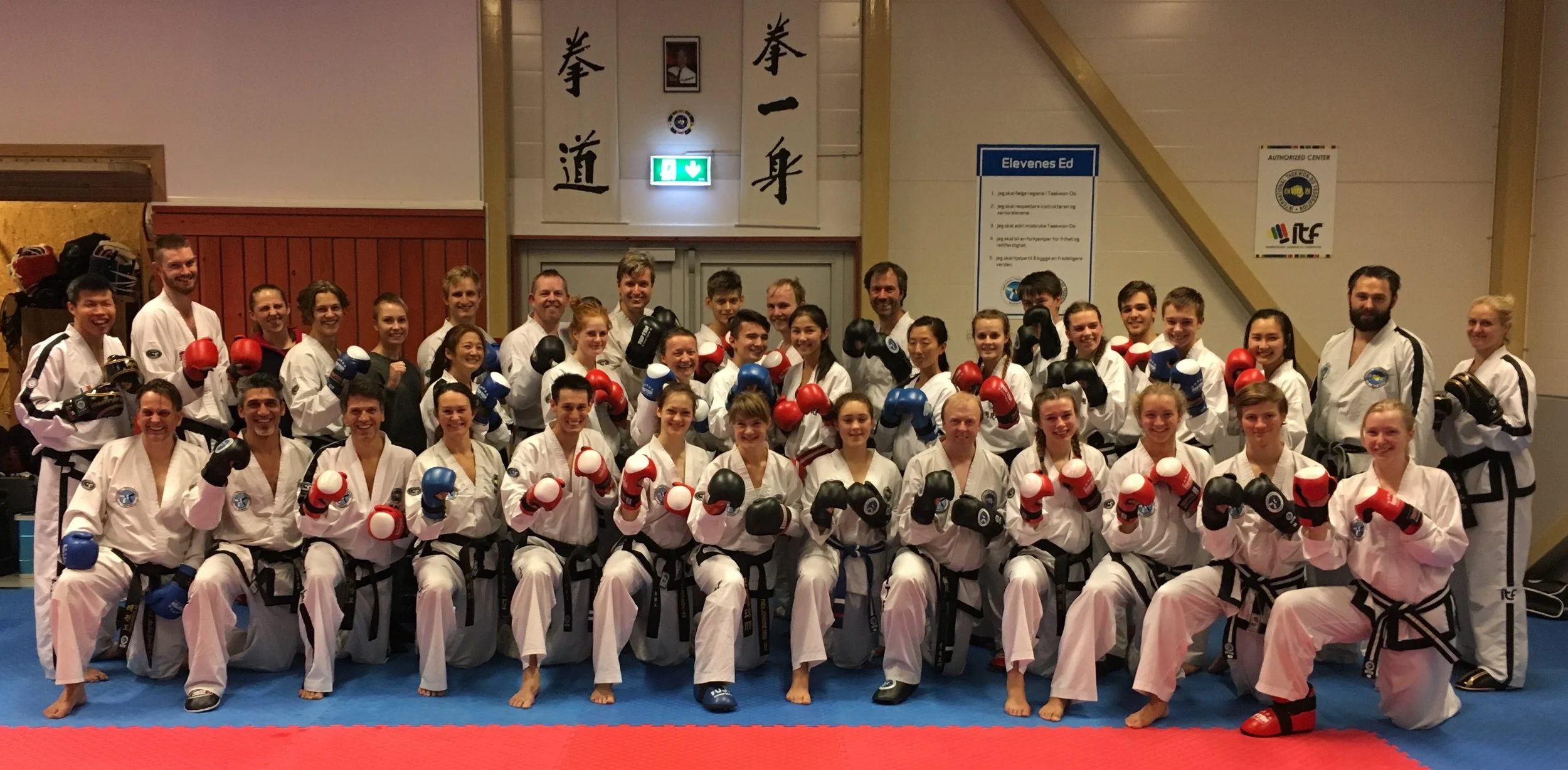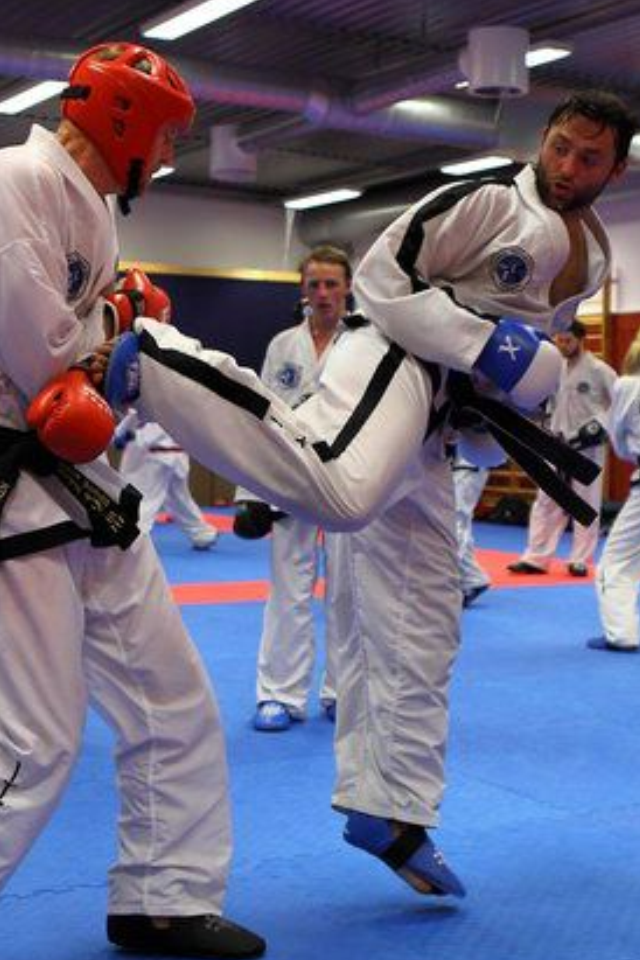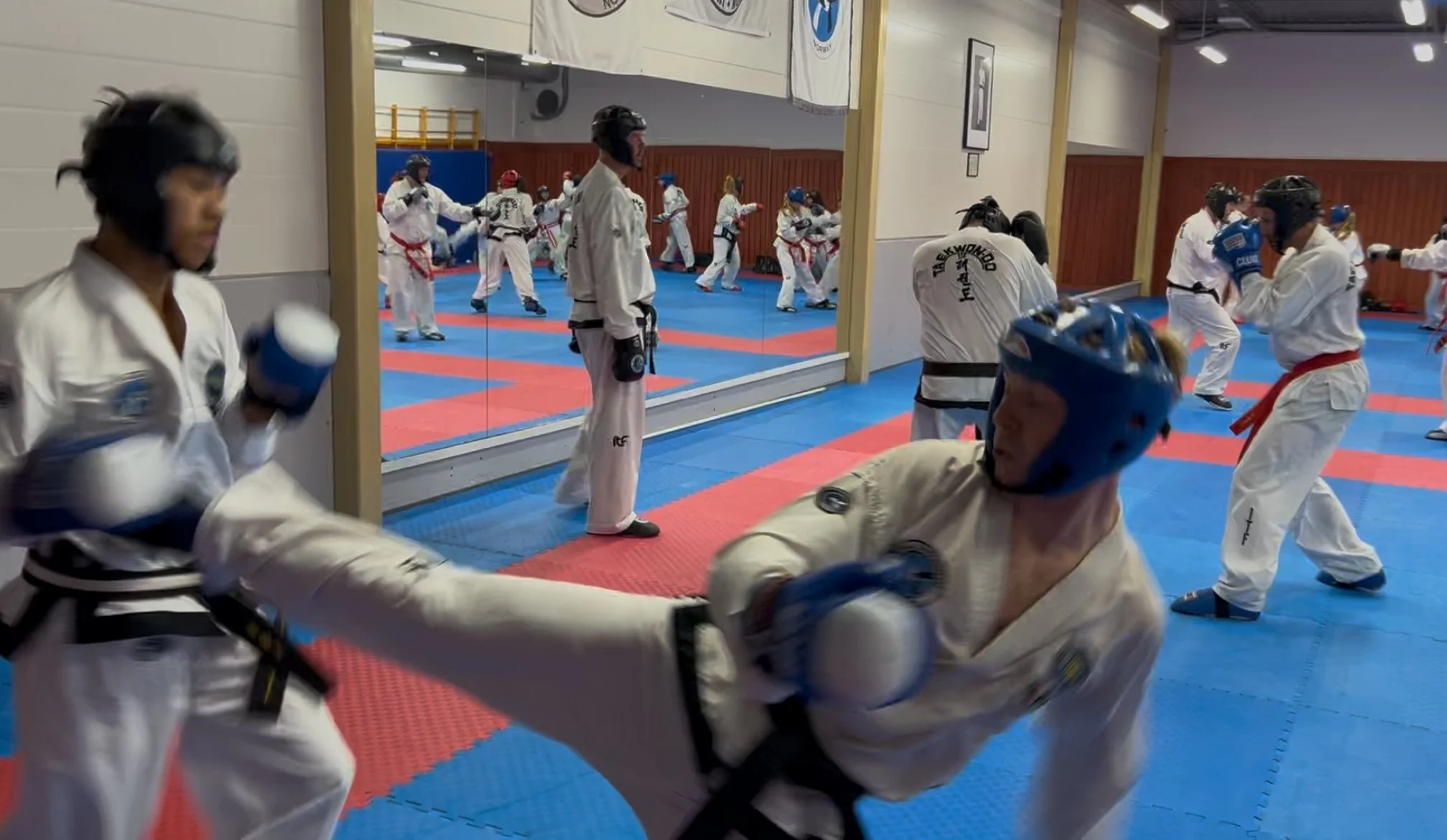ITF Free Sparring as It Applies to Self-Defense
By Roy Rolstad, VI Dan ITF Taekwon-Do
When people think of ITF Taekwon-Do, free sparring is often one of the first things that comes to mind. It is fast, dynamic, and exciting both to practice and to watch.
Over many years, National Taekwon-Do Norway (NTN) has built a strong championship culture with regional tournaments across the country, and our annual National Championship has become a benchmark for how martial arts competitions should be organized. Norwegian athletes have also proven themselves internationally, whether at open tournaments, European Championships, or World Championships.
The level of our practitioners is consistently high across Norway, from juniors to seniors. Behind them stand skilled instructors at club, regional, and national levels who dedicate enormous time and energy to making sure our competition activity is thriving.
But there is an important question we need to ask: how much of what we train for free sparring actually transfers to self-defense?
The Nature of Free Sparring
Free sparring in ITF Taekwon-Do is a structured competition between two equal opponents. Points are awarded for controlled strikes to the face or torso using hand or foot protectors. The competition takes place on a 9x9 meter mat, overseen by a center referee, four corner referees, and a head referee, with coaches offering tactical advice from the sidelines.
This environment creates safety, fairness, and a clear framework which are all necessary for sport. However, it also shapes how we move, react, and think during sparring. And those habits can be both an advantage and a limitation when we step outside the ring.
Qualities That Carry Over to Self-Defense
Competitors develop skills that are undeniably useful in real situations:
• Timing and distance control – the ability to judge range quickly, both in offensive and defensive mode
• Accuracy and speed – hitting the right target at the right moment
• Stress management – staying calm and making decisions under pressure
• Physical conditioning – endurance, agility, and explosiveness
• Closing the gap from outside range, perhaps the single most valuable transferable skill
That last point deserves special attention. In free sparring, athletes train to explode forward and land strikes before the opponent has time to react. This ability to cover distance instantly, from a range that feels safe to the opponent, is a decisive skill in both sport and real-life situations.
We see the same principle proven in modern MMA. Fighters like Michael “Venom” Page have built entire careers around controlling distance, luring opponents into a false sense of safety, and then closing the gap with lightning speed to land clean, fight-ending shots. ITF-style sparring develops that same ability, the art of going from too far to touch to right in their face in a split second.
Limitations of the Competition Framework
At the same time, the rules of sparring also introduce elements that do not exist in a self-defense situation:
• You face one opponent of the same size, age group, and gender
• Protective gear ensures safety for both fighters
• The fight takes place in a clean, flat area with referees controlling the match
• Techniques are limited to what scores points within the rules
In reality, self-defense situations are unpredictable. There may be multiple attackers, weapons, slippery ground, or sudden grabs. There is no referee to stop the fight, no coach to advise you, and no guarantee that your opponent will play fair.
When Competition Habits Become a Disadvantage
A competitor can sometimes develop habits that are counterproductive in self-defense. Pulling punches for control, expecting rules to apply, or freezing when confronted with illegal techniques like grabs or headlocks can all become weaknesses in a real confrontation.
That does not mean sparring is bad for self-defense. It means that we must train with awareness. Sparring gives us an excellent laboratory for timing, movement, gap closing, and fighting spirit, and Radix training helps us bridge the gap so those qualities transfer into realistic applications.
Beyond the Rules: Radix Sparring
At ITF Radix seminars we go further than the standard competition format. We allow sparring with multiple opponents, takedowns, and targets all over the body. This makes the training not only more realistic for self-defense but also far more fun. It challenges students to adapt in new ways and adds fresh layers to their practice. Suddenly, sparring is no longer just about scoring points but about problem-solving under pressure, staying aware of your surroundings, and dealing with chaos in motion.
The Debate: Why Spar If You Do Not Compete?
This leads us to a deeper question:
Why should I practice free sparring if I do not compete? If my main focus is self-defense and personal development, is sparring still relevant?
The answer is worth debating.
On one hand, sparring conditions you to deal with pressure. It forces you to adapt against a resisting opponent, develop resilience, and test your techniques in motion. These are qualities that books, solo practice, or even self-defense drills cannot fully replicate.
On the other hand, sparring is still bound by rules. It will never cover every aspect of real-life violence. If your only training is sport-oriented sparring, you may miss crucial skills like defending against grabs, dealing with weapons, or managing multiple attackers.
The Radix approach is to treat sparring as one important piece of the puzzle. It is not the whole art, but it is an irreplaceable tool for personal growth. Through sparring, you learn courage, adaptability, humility, and fighting spirit, qualities that extend far beyond both competition and self-defense.
The ITF Radix Perspective
With the ITF Radix project, I look at sparring not as the end point, but as a tool. The challenge is to take the qualities sharpened in competition, including the ability to close the gap with explosive precision, and expand them beyond the ruleset. By adding multiple opponents, takedowns, and open targeting, we also make sparring richer and closer to real-world scenarios. By reconnecting sparring with the applications found in patterns, we can train for both performance in the ring and effectiveness in real self-defense.
Free sparring builds great fighters. I see a clear difference between athletes at my seminars and courses, that are used to competing, fumbles less than non competitors. Self-defense demands adaptable martial artists. The art of Taekwon-Do, at its root, should prepare us for both.
Free sparring is, in my opinion, the most important tool for developing self defense abilities in ITF Taekwon-Do.
So for those who choose not to compete: You have to do free sparring to make your Taekwon-Do realistic!
Norwegian ITF Nationals, where all ITF style compete regardless of international affiliations.
Free sparring in Oslo East Taekwon-Do club





